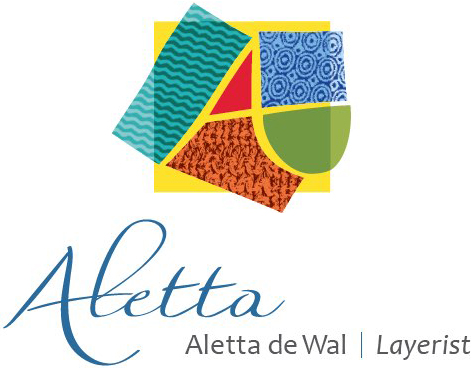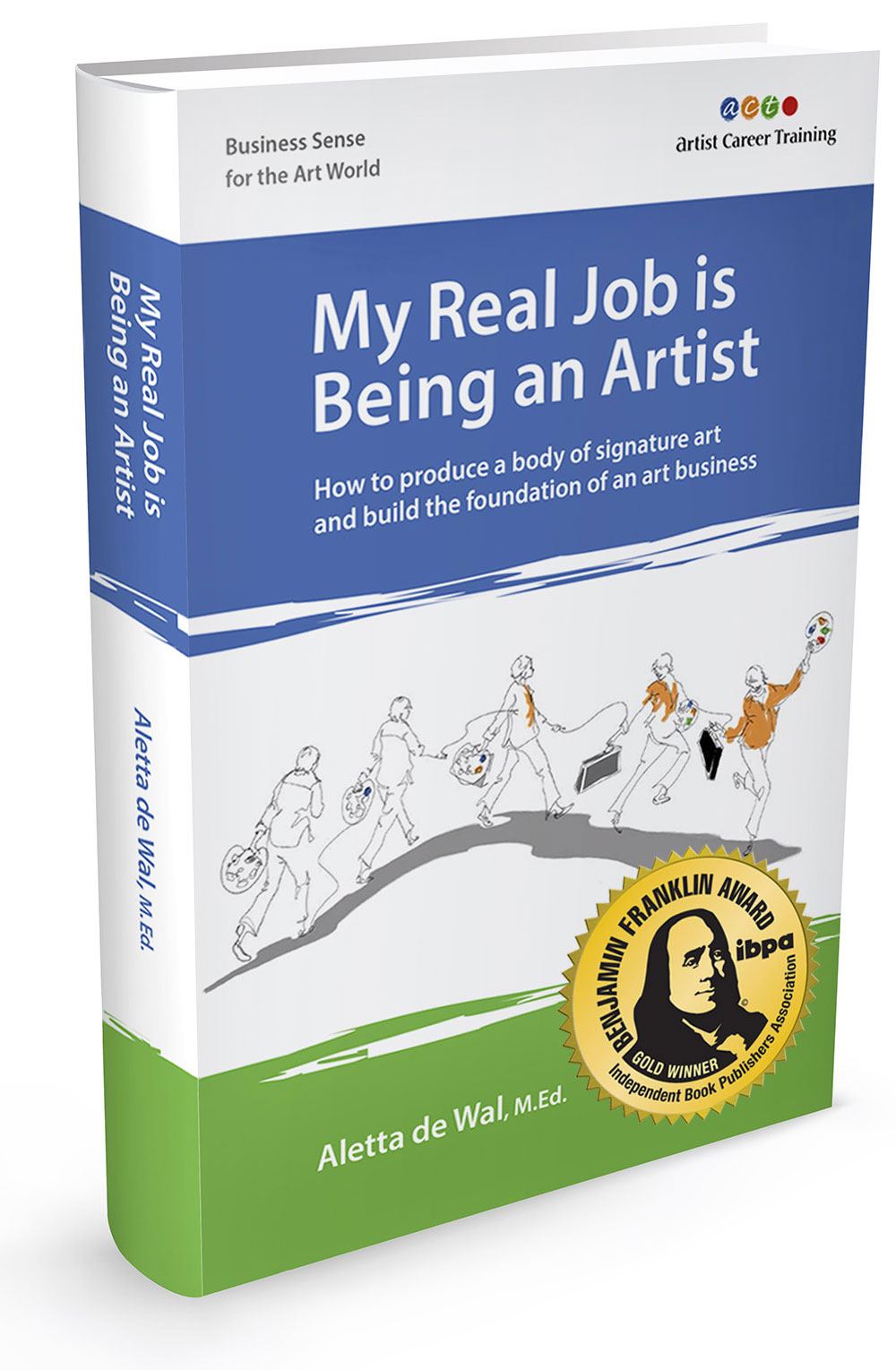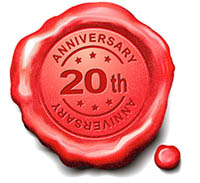![]() There is often additional information on the recording that is not in this written interview. Inspire yourself and listen while you make art.
There is often additional information on the recording that is not in this written interview. Inspire yourself and listen while you make art.
This interview breaks new ground as I interview two New York based artists who have found collaboration to be a source of inspiration for their art and their audiences."Collaborative Art Projects Inspire New York Painters Peter Bragino and Kevin Corcoran"
 |
|
©2011 Peter Bragino |
 |
|
©2011 Kevin Corcoran |
 |
|
Jazz ©2011 Kevin Corcoran |
 |
|
Angela ©2011 Peter Bragino |
Peter: "From my childhood, I knew that I would become an artist. When I was approaching the end of my 5 year Marine Corps enlistment I knew that it was due time to begin my career as an artist. The Marines was something I needed to do for my own personal growth but art was something I always did even in the Marines.
"A professional artist is someone who is fully interested in the craft, the history, and the journey of their own growth and understanding as an artist. I believe it's important to be organized and focused on where you'd like to go with your career as well. It's good to have some direction, and it's that awareness that provides the avenues on which you can focus your attention, and dedication to learning. Above all I feel the willingness to seek internal and artistic grow is the most important part of being professional."
 |
|
Crucifix ©2011 Corcoran |
From Kevin Jamison, Art Dealer / Collector: "Kevin Corcoran was born on April 6, 1961. His first artistic inspiration he labels as more of a natural reaction to the shy and introverted personality of his youth. Art was his form of speech as he was most certainly never outspoken as a kid in any fashion. In his junior year of high school Kevin was given a book on Michelangelo. Blown away, he knew from that point on what he was meant to do in life, which was to create. Eventually dropping out of high school, which consequently ended up being one of the most important decisions for him regarding his art career, Kevin began working different jobs in order to pay his way, yet what took up his time and thoughts was drawing and sketching.
 |
|
Tree ©2011 Corcoran |
"Most recently Kevin has entered a stage of pure abstract output. Recalling the linear similarities with those of Wilfredo Lam and expressing pure emotion like screaming at top of one's lungs, saying whatever is on one's mind, he calls it 'live expression.' The new works are very spontaneous, explosive, driven from life experiences, and the subsequent feelings from these experiences. "A long lineage and wide range of inspirations including, of course, Michelangelo, Monet, Kline, his fresco study at the Florence Art Academy under Romero Stefan, etc., are insightfully reconciled to create new relations between gesture and image, and illusion and abstraction in all of Kevin's works. Kevin has a style which is classic yet at the same moment evokes feeling and mystique."
 |
|
Distant Places ©2011 Bragino & Corcoran |
From Caitlin Nitz, Nixe nitz Jewelry: "Few artists on the New York scene are as dynamic as Peter Bragino. While daring and proactive, his work simultaneously displays classic skill and a keen design sense. He combines painting, drawing and the graphic arts in a swirling maelstrom of detail, design and raw emotion. Whether you are viewing his art on a canvas, paper, or digital media, it's Bragino's confident line and sweeping sense of motion in any medium that defines him as an artist. "Bragino culls his imagery from both natural and man-made environments. The Goddess, Mother Nature, and eastern and urban art are some of his many influences. Always reading and constantly sketching from life, he turns his careful studies into surrealistic landscapes that invite viewers into his unique mind's eye. His figurative and composition-based pieces showcase his sophisticated draftsmanship and innovative approach to the page."
Peter: "My artistic direction is actually at a cross roads right now. My work has been quite eclectic. The theme that has been consistent throughout my work has been a deep study of nature and organic composition. I've spent a great deal of the past few years handling commissioned projects for clients but this year I've taken a step back in order to reassess where it is I'd like to go with my career.
"As far as media is concerned I've generally used a mixed media approach in all my work. I don't believe in techniques as much as I believe in solutions. If I had to identify a thread that's been present in my work it's been organic design.
"Regardless of the project, the medium or the size I generally strive for movement, and a natural sense of design that mimics the way nature works. Like how she scatters shells on a beach or carries smoke into the air or arranges a box of matches that have scattered to the ground. I'd like someone to look back at what I've done as an artist and say that I was brave, experimental, and passionately engaged in what I created. Hopefully they'll see the joy and excitement that I have in being an artist represented within my work."
 |
|
Mythic Mountains ©2011 Bragino |
Peter: "My direction right now as an artist is to take an assessment of what I've done to this point as an artist, organize the business side of my operation and cut anything that's unnecessary out of my plan. From there I'll be setting my 1, 5, and 10 year goals so that I can navigate efficiently through the challenges that lie ahead in running a successful business.
"I'll be launching a brand new online store this year as well which I feel will help me move along my path in sharing my work. I'd also like to pick up a few galleries to exhibit different bodies of work I'm developing.
"The retrospective question is a tough one. I'm not even sure when you would have one. I can imagine it being 15 years from now in a NYC warehouse environment. It would be interesting to transform a raw space into a fully immersive environment with plenty of installation elements. Something you could get whisked away by and lost within, a show that encompasses you fully with a combination of 3 dimensional environments and 2 dimensional work."
Kevin: "My typical day consists mainly of painting, drawing, studying, and constantly looking for art in the world around me. I'm constantly observing so I can understand better what I am trying to achieve with the human form so I can take it to a new level."
Peter: "A typical day right now is generally split between my spiritual practice, my to-do list, my study time, and my creative exploration. Basically it's meditate, write, be productive, learn something, create something. I pretty much make art daily - or it makes me. It's not really a choice sometimes the way it unfolds."
 |
|
Lost World ©2011 Bragino & Corcoran |
"We started working together out of a desire to do something different. Kevin had a gallery on Long Island and things there were generally status quo. People would come in say how much they liked the work and then go about their day. We sat down and talked about where we thought our art should go. We were disenchanted with the whole standard process.
"We both wanted to have a more immersive experience with the people that entered the gallery so we put a canvas up on the back wall one night, opened the door, got some food and wine, cranked up the music and began painting in an improvisational manner. We painted together, over, around and through each other's graphics. It was very rhythmic, 'jazz' style and very free. It wasn't about one of us being a great painter of dragons and the other a great painter of landscapes - let's put them together. It was fluid co-creation. The painting became stronger as we switched side to side. We never worked on one area too long.
"It was exciting and the people now had something to watch when they came in the door. They became a part of the experience and before we knew it the gallery was packed week after week on Friday nights when we would paint. Musicians showed up, other painters would work on pieces on the side walls and it turned into more of a creative gathering and less of a normal gallery experience.
"I'd say that things pretty much clicked right from the beginning. The first one was a 'kitchen sink' painting, full of energy and color but it didn't quite gel and wasn't as successful as a piece as we wanted. So we began to discuss more and set some boundaries. We'd define some idea that we'd like to explore in the painting before beginning, like composition, certain color palettes, or mood and then we'd attack the painting. By the end of the night we were doing more looking and discussing than painting. I think it generally worked well like that. We got into a great groove and produced about 18 pieces this way over several months.
"The advice that we'd give to any artists who want to work collaboratively is to experiment, have fun, paint together on top of each others' marks and leave your ego at the door. You have to stay in communication with each other about your thought processes. You have to compromise, trust one another, and solve the piece together. The painting or installation no longer belongs to each of you individually it belongs to the third artist that you create by working together."
 |
|
Biggest Collaborative Project: The Cee Flat Gallery © 2011 Bragino Corcoran |
Peter: "The top peak moment for me will always be the moment, as a little boy when my father showed me my first wall mural in the subways, and the flash hit me that I was an artist. That moment will always stand out as my first spiritual and artistic experience. It was my first moment of clarity, and I was lucky to know that at such an early age.
 |
|
Team Collaborative Project West Gilgo Beach Tunnel Passage ©2011 Bragino & Corcoran |
"After that the building of Theceeflat Gallery is definitely a peak experience. That was 6 months of hard work, design, and problem solving. It was a very formative time."
[Watch Collaborative video on Making Theceeflat here:
http://www.bragino.com/archives/996]
 |
|
Bianca ©2011 Corcoran |
Kevin: "Success is not always about getting paid - first it's about achieving your goals as an artist and sharing that with other artists and the public. Achievements come everyday as an artist. When you're learning, expanding, producing and sharing you're achieving."
Peter: "I think success ultimately is defined minute by minute inside yourself. There are so many things that are successes in our lives. Being present to me is a success that's generally overlooked. I think it's more important to be here now than to always be thinking about where you're going.
 |
|
Jesse ©2011 Bragino |
"Sometimes success is getting the next thing done on my to-do list without looking at YouTube. It can come in such small bounds. Sometimes success is saying you've done enough work for the day and granting yourself a reprieve to go look at paintings at The Met.
"I celebrate my success by sharing life with the people that surround me and trying to engage fully within that experience."
A.C.T.: What obstacles have you encountered in your art business and how have you handled them?
Kevin: "My biggest obstacle is creating time for myself and my art. I have two beautiful daughters that I provide for who are my first priority (not obstacles because they are my joy). I balance time with my daughters with the need to put in the time to pursue the career, juggling all the other responsibilities that life provides. I handle it by making productive use of the time I have to dedicate to art."
Peter: "In my early career as an artist, it was easy to blame this person or that situation for what was holding me back. There are obstacles for sure but I find that they're mainly within ourselves. In the right mindset challenges are beneficial and being in the moment, even during a challenge, can be enlightening. Any obstacle that's been in my way throughout the years I've tackled with study, persistence, and patience. I've also handled them by seeking support. I've found mountains of support through books like The Artist's Way (which I do on my own, with another artist and in a group), friends who were working artists/models of success and coaches/mentors like you Aletta. There is so much support out there. If you are not moving forward there's not far you have to look. We just need to ask for help and then accept the abundance that becomes available."
Kevin: "The opportunity to meet other unbelievable artists and professionals in the art world, talk to them and work on interesting projects together as you develop a community."
 |
|
The Power of Intention ©2011 Bragino |
Peter: "A professional approach brings every opportunity you have - meeting people who can help you; being involved in activities that bring you exposure; having the discipline to post on a Blog regularly (which brought me contacts from people I had lost touch with who wanted to buy art for their new homes.)
"The Marine Corps taught me great lessons in self discipline and self respect which I've carried with me. By believing in yourself I think you manifest a professional attitude towards everything in life. Personal pride can be seen in everything I do and it makes me who I am. When you see that in yourself other people will see it as well.
"Career wise I think it's important to understand that you're responsible for your own career. Nobody is going to magically discover you and put you onto a pedestal of art royalty. You make your own path, your own connections, and your own career. Believe in yourself, make art, make friends."
Kevin: "When I was growing up, I was told 'Don't waste your time - get a real job. You're wasting your time. You'll never make a living at it.' At Parsons, Dave Passalaqua Sr. told me this: 'Don't let anyone tell you you can't make a living as an artist. If this is something you're passionate about, the passion will help you to find a way to keep going.' I'm inspired by anyone who's pursuing art in general and whatever burns inside of them and going about it with passion."
Peter: "When I was just starting, I had friends who were making a living solely making art. I looked up to them and the model they were using and was inspired by their dedication.
 |
|
Quintessence ©2011 Bragino |
"My role models and mentors have come in all shapes and sizes. From the most organized artist friend that I know to the most downtrodden addict I've encountered. They all display courage to me and that is inspiring. Sometimes I'm more inspired by the person who's fallen to their lowest state and gets back up again than the person who's never fallen at all. I believe that we must have positive and encouraging role models to look up to, but I also believe that lessons about life and art are learned just about anywhere we look.
"People that have the hardest roads in life and choose to do something about it - those people really inspire me. The best advice I've ever gotten was from a Sheryl Crow song. The line is this: 'Making miracles is hard work, most people give up before they happen.' Never give up, that's my motto."
A.C.T.: What is your art marketing strategy? What promotional materials and actions do you use most often? How do you manage your mailing list?
Peter: "I've had a website since 1998 before most people did and it's now in it's 6th incarnation. I've learned a lot about marketing and branding by continually tweaking, redesigning and refocusing the site and the work it showcases.
"My art marketing strategy for right now is simply to keep sharing my work with the world. While I do that I'm beginning to develop a more solid plan of attack for hitting multiple avenues of marketing and schedules for releases pertaining to upcoming shows, the launch of my online store, etc.
"I send a monthly newsletter and, as an incentive, when people join my mailing list, I give them a free art print from a choice of five. I manage my mailing list through Mailchimp which is free up to 1000 names. I have it set up to pull all my blog posts from the month and send them out in a newsletter automagically. Pretty neat.
"I think I get more exposure through Facebook than anywhere else, but I think it's very important to maintain your own web presence with a website/blog. That's my trio at the moment. You have to keep looking at what's working, what's not working and make adjustments. A website is your artistic headquarters and it's important that people know they can always find you there regardless of what trends occur in social networking.
[Get Peter's free iPhone app here: http://itunes.apple.com/app/bragino/id335653411?mt=8]
Peter: "I use social networks to share my life as an artist. I have a few small ads on Facebook that I use mainly to encourage other people to create. More of an inspirational ad campaign, they're kind of my little experiment in spreading good will. I don't like the idea of an ad that tries to sell something, so I use it more to introduce myself and encourage them.
"The volume that social networks create can be overwhelming. I handle that by linking my RSS feed from my website and newsletter to other sites like Twitter and Facebook. It automatically updates my accounts every time I release a blog post. I had to do it that way because social media was starting to become over demanding to me.
"Automation makes it easier, but the way things are moving, I also try to go on and interact on a personal level as well. I think that's important. I always comment back when people post and engage them in conversation. Twitter was a bit abstract for me for a while, but I am sharing my art there. I'm thinking about adding motivational posts and how I create the paintings."
Kevin: "I'm always willing to donate art to any cause that touches me or that I believe need attention and to donate what I know to others. I work with mentally disabled people and just being able to share myself in a creative way with them and allowing them to express themselves creatively has been very important to me. Peter and I also have donated art through benefits and fundraisers, using the gallery to allow charitable causes to raise money ,e.g. organizations that foster art projects in Brooklyn, Young Professionals, breast cancer, childhood disease, Haiti and other world disasters."
Peter: "Art allows you to do good in the world and to bring people together. I want to find more ways to have a social impact and to do good. I've used my art in multiple ways to support causes. I've:
"I have ideas about residencies to raise money for national parks, as part of my reassessing where I am going with my art."
 |
|
Team West Gilgo Beach Tunnel Mural ©2011 Bragino Corcoran |
"The only instance where I've had a legal issue was with hanging art temporarily at a lounge in Chelsea, Manhattan. At the time I didn't have a contract for the owners to sign and when I went to pick the work up after a 2 month period of time a few original pieces and 4 canvas prints had been stolen. The whole thing wound up being such a headache with the police involved. It turns out one of the owners pulled out of the business and the general consensus was that he decided to take some art with him. There was no proof that he had done it though and in the end I just let it go. I was much younger and didn't seek professional representation but I should have. Without a signed contract there didn't seem to be any proof of what was and wasn't there at the lounge. Now I'd always have a contract that spells out liability and is signed with a full inventory list. You have to be organized and meticulous because unethical people will take advantage if they can.
Peter: "When I first started selling art I was blessed to have friends that had their own personal galleries to produce my own shows in. So I basically never went the traditional route of established galleries with a stall of artists. I think I've been involved in how the art market changes because I was already seeking alternative ways to promote and sell work right from the beginning. So even though there was a shift, it never really affected me because I was already in a different mindset than the traditional route.
"That mindset was more of a self promotion/production thought process. I've produced every show I've been a part of on my own or with friends. It's always been an underground sort of approach. The greatest lesson I've learned through the years is to be ready to work hard. Shows don't produce themselves and there are many things that need to be taken care of to produce a successful one. It's a labor of love but it fosters growth to tackle the organization of a show. It's all part of the experience of being a working artist."
Peter: "If someone wants to pull a copy of your art on the Internet, they can, even if you indicate your copyright. When I post, I do not put high resolution images so they can't make large versions. I see artists using Limited Edition prints and special offers that are so special that it gives people a reason to buy them.
"The Orphan law is worrisome in that it's unclear as to how the registry would work if passed. I'm all for a registry that's free to add artistic work to but fully against one that the individual artist would have to pay for. There are a lot of arguments going on around about it and I can see both sides to some degree. The difference that worries me is how people are interpreting the law. Some interpret it as being a good thing and others a bad thing. In my opinion it doesn't seem to be in the favor of the individual artist. If it passes it should be questioned very heavily by all artists."
A.C.T.: What advice would you pass on to emerging or mid-career artists who want to succeed in any economy?
Kevin: "I would repeat what Dave Passalaqua Sr. said to me: 'Don't let anyone tell you you can't do it.' He also said that the most important question you can ever ask yourself is 'What if...? What if I did this? What if I took it in this direction?' This question, and being able to embrace failure is something to explore. 'Some of my greatest successes have come from my biggest mistakes. They're my mistakes and nobody else is going to do them like I do.' This is what defines us as artists. To me, you have to be willing to take that risk, because that's where the beauty lies. You can't be scared and stay inside of a little bubble of what you do well. I see a lot of young artists working on a piece and they are afraid to 'ruin' it. This prevents them from taking their art to the next step and keeps them stuck in a smaller paradigm. Be open to growth and change; keep yourself wide open all of the time. Hone your skills and your craft by studying constantly. Continuously study and pursue your ambitions. Always ask yourself 'What's next?'
"Look within yourself and see what makes your heart beat faster, what touches you and what you want to say to people, instead of just making pictures."
Peter: "For some people, being an artist, especially in the beginning, is a bit of a romantic idea. It takes a lot of work to be an artist. Most people don't just wake up one day and paint amazingly. At least it did not happen that way for me. I had to scrape and crawl for every bit of knowledge I have, along with years and years of study and not being afraid to try different things.
"It's a beautiful gift you can give yourself to really understand and make art - and life in general. It's a worthy pursuit for many reasons - not only artistic, but also spiritual and human reasons.
"I would say this to emerging artists: Explore your craft and study it well. Do it as much as you can. Enjoy as many aspects as possible and above all seek growth and continue to learn. Maybe it's just me but I don't necessarily agree with defining a style of work so rigidly unless that's all you care to paint. I like the idea of change and growth more than the idea of 'Style.' I believe it was Hokusai that said he didn't really begin to understand drawing until he was past 50.
"I know that there are a lot of mid-career artists out there who are very successful with a way they have developed to do things and are acknowledged for this. If that works for you and you are happy doing things that way, that's great.
"Personally, I'd love to see some of the artists I'm friends with to grow further. To these mid-career artists I'd say do something that you've never done before. Some of the most beautiful results in making art come after the moment when you have 'ruined' something. You are already at that point so, what are you going to do now? Well, now you have to fix it - use your intuition and trust that it will help you solve anything - in art and in life. You have the creativity and ability.
"Don't be afraid to fail, try something new, draw with your opposite hand, leap into the unknown, try something so outside your comfort zone that you fail miserably, try not knowing what you're doing again like when you first began. I think that growth only comes from putting yourself out there and taking a risk, otherwise you're just repeating yourself and that to me isn't art, it's production. If you want to succeed in any economy keep growing and exploring. You're bound to find your way eventually, maybe even to some amazing place you never even knew existed. It's that unknown that keeps me interested, inspired, and working as an artist regardless of the economic landscape.
"Despite what I - or anyone else- says, I think artists get their best advice from themselves and should develop their careers in any way their intuition tells them to. Some people will tell you that you should draw every day. I used to do that on the subway. Then for a year, I stopped drawing and just looked. I asked myself, 'Why is that person different from the person sitting next to them?' Sometimes when you are drawing with your hand, you are ignoring what you see.
"Try things, do something different and don't listen to everyone's advice not even mine, if it differs from what you feel inside that you should do. If you're just starting your career maybe you know a new avenue to pursue that I didn't, maybe I should be listening to you. The youth always seem to have the answers and I think a lot of the time they're right. They've got their fingers on the pulse.
"I think art is a lifetime endeavor of searching and learning. Don't worry so much about seeking success by selling a lot of paintings or getting into galleries. Look for success in your own personal journey with art and how it enlightens your life, your understanding of it, and the lives of others."
Peter: "My involvement with Aletta through one-on-one coaching has helped me to understand the importance of being organized in all areas of your artistic career. Especially in dealing with galleries and other institutions. You have to have your bio done, your list of collectors, etc. are like a ground base that you have to lay down in order to move forward in a professional manner. It's important to look as professional in your business side as it is in your creative side. To have it another way is a recipe for chaos. Quality is quality and we should strive for it in all aspects of our careers."











